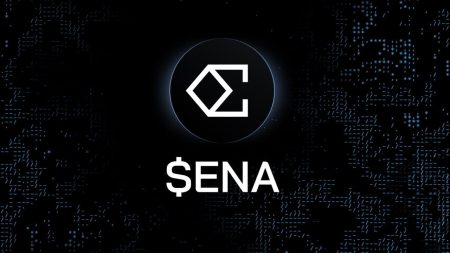Despite hotter-than-expected inflation data, the Bitcoin price defied expectations and surged in value on Wednesday, even as the US Federal Reserve’s rate cut story was thrown into doubt. The US Consumer Price Index (CPI) reported a 0.4% increase in March, exceeding the anticipated 0.3% rise, leading to a rise in US bond yields and the US dollar. This news caused US stock prices to drop, with the S&P 500 down around 1%. Lower stock prices typically spell weakness for crypto prices, but Bitcoin’s bounce back to the $69,000s may indicate that the cryptocurrency market is not as closely aligned with traditional financial markets as previously thought.
Expectations for easing from the US Federal Reserve have been a major driver of Bitcoin’s price appreciation this year. However, following a string of stronger-than-expected US economic data releases, the narrative of a rate cut from the Fed has taken a blow. US interest rate futures markets are now only pricing a 15% chance that the Fed cuts interest rates by 25 bps in June, down from 57% one month ago. This change follows strong ISM Manufacturing and jobs data, making policymakers reluctant to express support for near-term rate cuts.
Several factors may have contributed to Bitcoin’s resilience on Wednesday, despite the hotter-than-expected inflation data and sell-off in traditional financial markets. One potential explanation is the belief that the large-scale selling of Grayscale Bitcoin Trust (GBTC) shares by bankrupt crypto estates is nearing an end. Grayscale CEO Michael Sonnenshein suggested that outflows from the ETF may be reaching equilibrium. Another possible explanation is the upcoming Bitcoin halving, which will reduce the issuance rate of new Bitcoins by 50%. However, the short-term market impact of the halving is uncertain, with some traders hesitant to make significant bets ahead of the event.
Despite the uncertainty surrounding the halving, the long-term outlook for Bitcoin remains positive. Factors like the rising US deficit, the upcoming halving, and the potential for a Bitcoin ETF approval could support the price of Bitcoin in the long term. Bitcoin’s resilience to the market’s paring back on Fed tightening bets suggests that when Fed rate cuts do arrive, the Bitcoin price is well-positioned to move higher. While short-term price movements are difficult to predict, the long-term outlook for Bitcoin remains bullish, and it could potentially reach $100,000 this year pending a breakout from its consolidation pattern.
In conclusion, even though the hotter-than-expected inflation data impacted traditional financial markets and led to a drop in US stock prices, the Bitcoin price remained resilient and saw a surge in value. The changing narrative around a potential rate cut from the US Federal Reserve has also influenced investors’ expectations and could impact Bitcoin’s price movements in the near future. Despite short-term uncertainties surrounding events like the upcoming halving, the long-term outlook for Bitcoin remains positive, supported by various factors that could drive its price higher in the future, such as the rising US deficit and a potential Bitcoin ETF approval.















